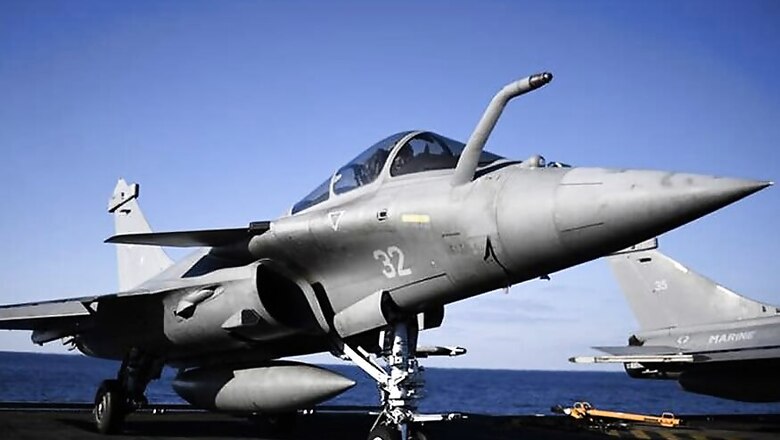
views
New Delhi: The much awaited Comptroller and Auditor General report on the Rafale Deal has been a mixed bag for the government and the opposition, both of whom have been engaged in a political slugfest over allegations of wrongdoing.
While the audit report summed up that the deal agreed to by the Narendra Modi government was 2.86 per cent cheaper than the price agreed to by UPA, the claim that the new deal would lead to faster deliveries to meet the immediate needs of the Indian Air Force has been given a thumbs down.
In the report, the CAG has summed up that there was an improvement of one month in the delivery schedule of the 2016 contract signed between the India and France over the previous offer.
One of the major criticisms of the Modi government’s deal has been that it reduced the number of fighter jets to be acquired from 126 to 36 in its deal. In the deal that was being negotiated by the UPA, 18 aircraft were to be acquired in a flyaway condition and the rest were to be manufactured by the HAL as part of transfer of technology.
The government, in its defence, has said that it removed the ToT clause and decided to buy the 36 aircraft in flyaway condition keeping in mind the “urgent” operational needs of the IAF.
Even in its submissions before the Supreme Court to justify the procurement of 36 Rafale fighter jets from France, the NDA government said there was an “urgent need to arrest the decline in the number of IAF fighter squadrons
But the CAG audit findings suggest that changing this aspect of the deal has accrued miniscule benefits in terms of the delivery schedule.
The report states that according to the original delivery schedule offered by Dassault in 2007, first 18 flyaway aircraft were to be delivered between 37 months to 50 months of signing of the contract and the next 18, to be licence produced in HAL, were to be delivered from months 49 to 72.
For the new deal, the Indian Negotiation Team (INT) conveyed to the French side that it expected the delivery of first batch of 18 Rafale aircraft in 24 months after the signing of the IGA; and next batch of 18 aircraft in 36 months.
“However, the delivery schedule finally offered by the French side was 18 aircraft by 36 to 53 months after the signing of IGA, and the remaining 18 aircraft to be delivered by 67 months of signing of IGA,” the CAG said in the report.
This, it said, was better than the delivery schedule of 2007 by five months.
However, it further pointed out that as against the delivery period of 72 months in the earlier offer, the contracted delivery schedule for 36 Rafale aircraft was actually 71 months.
“The ISE (India Specific Enhancements) on the first aircraft would be completed by T0 + 63 months and integration on the next 35 aircraft would be completed in 8 months. Thus, there was an improvement of one month in the delivery schedule of the 2016 contract,” the CAG concluded.
The report further mentions that the INT had apprehensions about the achievement of even this delivery schedule, because at the time of signing of the contract, Dassult had an order backlog of 83 aircraft.
“Considering its production rate of 11 aircraft a year, clearing this backlog itself would take more than seven years,” he said. The ministry, in its response, however has stated that the project was currently on schedule. The first Rafale jet is on course to be delivered to India in September of this year.
















Comments
0 comment